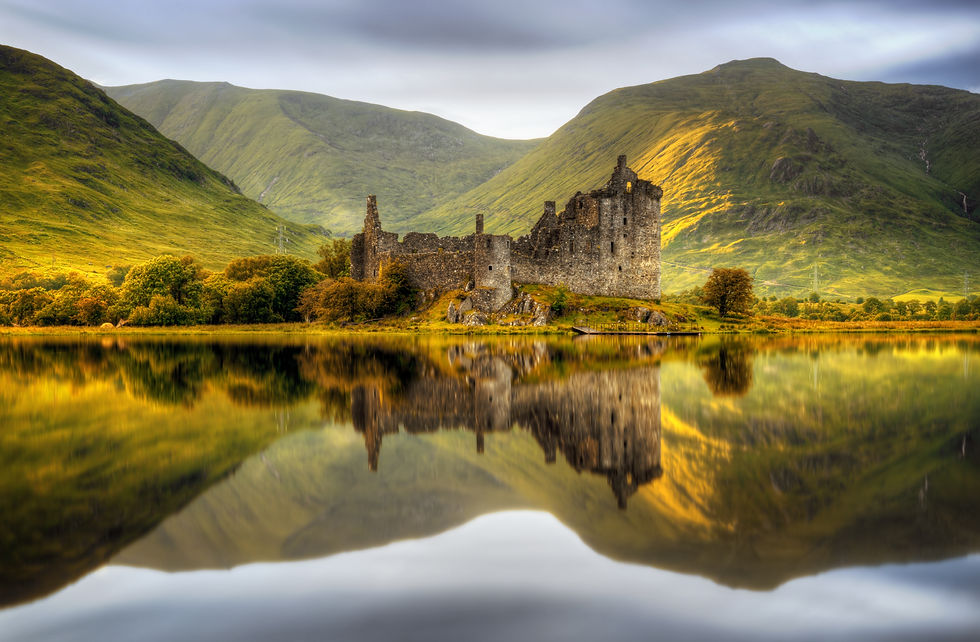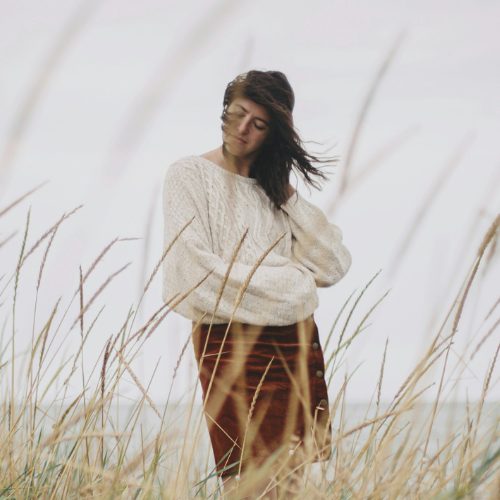8 British Isles Hidden Gems You Have To Visit!
- Hermes & Hestia

- May 17, 2021
- 4 min read
Updated: Jul 26, 2021
Breathtaking places to visit, from sandy coves to mountain treks, open moorland, historic forests and picturesque dales, there is truly something for everyone. Amazingly there are still many lesser known hidden treats to discover that we seek out and quietly share amongst our followers... we hope you enjoy them!

Photography Andrew Ridley (@aridley88)
Eigg The Inner Hebrides
Eigg – an island grouped within the Inner Hebrides is to be found about halfway up the west coast of Scotland, a ferry ride from the mainland ports of Mallaig and Arisaig. The island is small, about 5 miles by 3.5 miles but what it lacks in size it certainly more than makes up for in beauty. The word that you’ll hear regularly on the island is the Sgurr or An Sgurr is the huge pitchstone rock that dominates the island, it was created as a result of a volcanic flow that was forced along a river bed between land masses that eventually fell away and left the only peak on the island. The islands name Eigg was taken from an old Norse word for Notch or Wedge which refers to the shape of the Sgurr. With over 100 permanent residents on the island, a vibrant population welcomes visitors, there’s a flourishing artistic community on the island with many musicians and crafts folk calling Eigg home. There are regular concerts, ceilidhs and workshops to attend so check the islands tourist board website for information on dates and times. Amazingly the island has turned to solar wind and water power to generate all of its own renewable energy turning its back on fossil fuels. It owns and manages its own electricity production, truly impressive. Full post click here.

Photography Jack B Nervum
Durdle Door The Jurassic Coast
Durdle Door is one of the Jurassic Coast’s most iconic landscapes. The rocks that make the arch at Durdle Door on the Jurassic Coast are thought to be approximately 140 million years old! Durdle Door is part of Lulworth Estate, which is owned and managed by the Weld family. However it’s free to visit. To access the pebble beach is on foot via a path and steps over the hill from Lulworth Cove you will need to walk along a steep downhill path, and a further 143 steps.

St Michael's Mount Cornwall
St Michael's Mount is one of 43 unbridged tidal islands that one can walk to from mainland Britain. The island is connected to the town of Marazion by a man‑made causeway of granite setts, passable between mid‑tide and low water. It is managed by the National Trust, the castle and chapel have been the home of the St Aubyn family since 1650. Set in the cobbled path, leading up to the castle is this heart‑shaped rock. Legend states that this stone is the petrified heart of the Cormoran, one of the most fearsome giants to have inhabited Cornwall. He made his home atop of the mount and when he wasn't hurling stones at other giants he made a general nuisance of himself by stealing livestock and terrifying the locals. A cunning plan was hatched to dig an enormous hole and lure the giant into it. It worked and now all that remains is his stone heart on the cobblestone path. See if you can find it ‑ we did. The legend continues that if you put your ear near enough to the heart stone you will hear the giant's heartbeat ! Let us know if you hear it...

Kelly Hall Tarn
Kelly Hall Tarn is a small tarn in the beautiful Lake District just five minutes walk from the road. Its name is said to be derived from a nearby building that has since disappeared. Set against the dramatic backdrop of the Old Man of Coniston Kelly tarn offers photographers and walkers some pretty fabulous views!

Lagangarbh Hut Scotland
The iconic Lagangarbh Hut under the foothills of the Buachaille Etiv Mor mountain range is the only building in the vicinity of Buachaille Etive Mor and sits adjacent to the River Coupall. Lagangarbh Hut, popularly referred to as a cottage and was once thought to be a crofting home. Since 1946, the hut has been maintained by the Scottish Mountaineering Club and owned by the National Trust of Scotland. who make it available to hire as accommodation; up to 30 people can be accommodated. Inside, the hut remains largely traditional and has the local Ballachulish slate roofing and was extensively renovated in 1994. Parking for the hut depends on the state of the track leading off south from the A82 at Altnafeadh. If this track is not navigable by car, park in the layby on the opposite (north) side of the A82. Follow the track to the River Coupall, take the footbridge and follow the subsequent path ‑briefly‑ to the hut.

Three Cliffs Bay in the Gower Peninsula, South Wales
Gower Peninsula Wales
The Gower Peninsula is in South Wales, and is known for its beautiful golden, sandy beaches and mysterious rocky coves, charming villages and past hidden coves, forts and medieval castles. Gower’s coastline is home to over 20 beaches, and they range from long stretches of sand to secluded coves which lie among Gower’s fascinating limestone cliffs. The Gower Peninsula was Britain’s first designated Area of Outstanding Natural Beauty.

Kilchurn Castle
Kilchurn Castle is a ruined structure on a rocky peninsula at the northeastern end of Loch Awe, in Argyll and Bute, Scotland. It was first constructed in the mid‑15th century as the base of the Campbells of Glenorchy, who extended both the castle and their territory in the area over the next 150 years. After the Campbells became Earls of Breadalbane and moved to Taymouth Castle, Kilchurn fell out of use and was in ruins by 1770. It is now in the care of Historic Environment Scotland and is open to the public in summer.

Photography @am.basteir
Isle Of Harris
One of the most dramatic of all the Hebrides is Harris, a tiny island formed from the oldest rocks on earth, a breathtaking landscape of soaring mountains, wild moors, and breathtaking beaches. The legendary and fabulous Harris Tweed is weaved here by the local crofters. This is the only fabric that is protected by its own act of Parliament. The southern part of Harris is less mountainous, with numerous unspoilt, white sandy beaches on the west coast. North Harris, adjoining Lewis, contains Clisham the highest mountain in the Outer Hebrides at 799 metres (2,621 ft). Tarbert is the main port and main settlement of Harris, with a population of about 550.
See Our Guide on Instagram

Comments